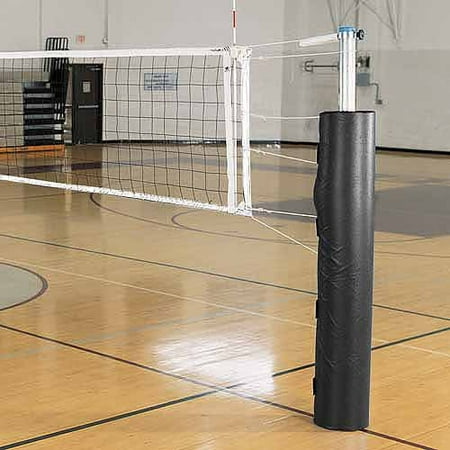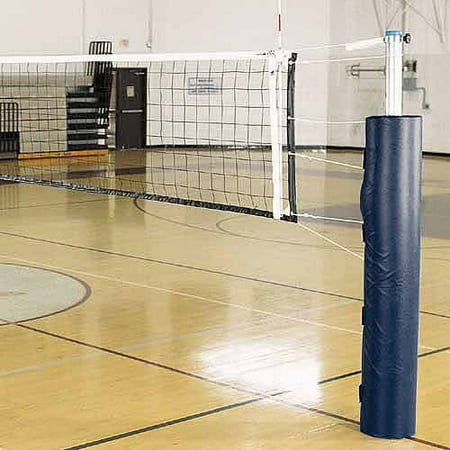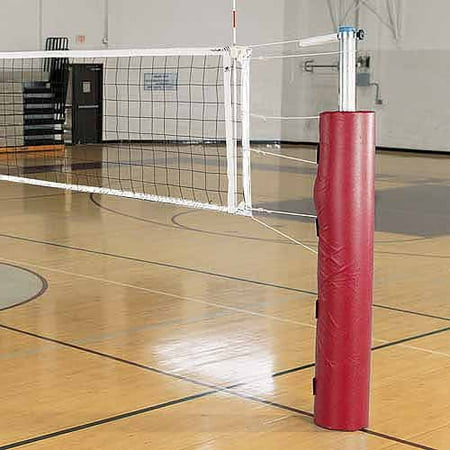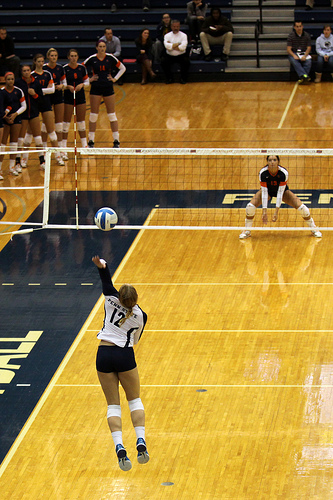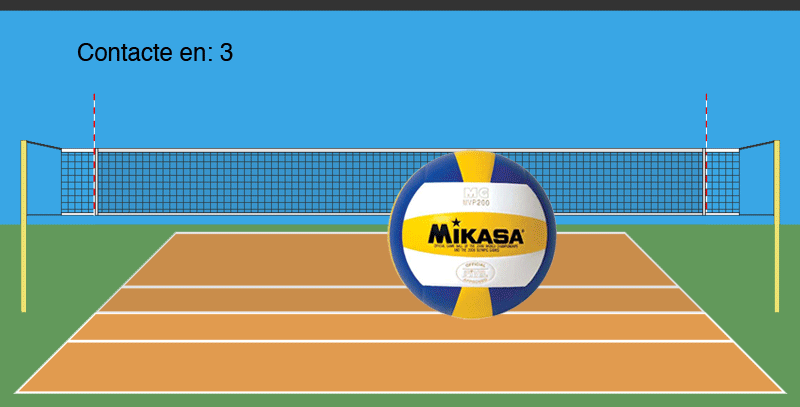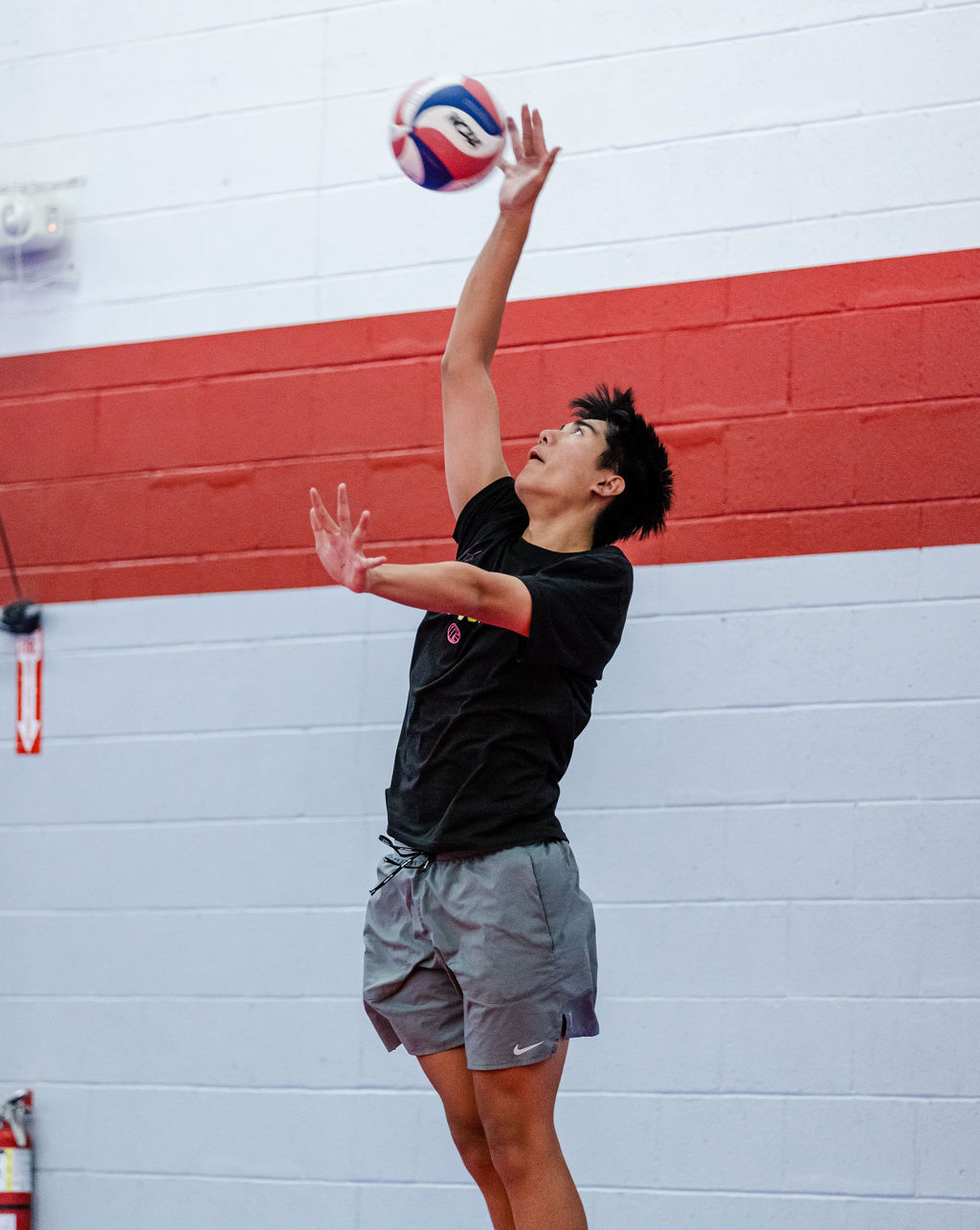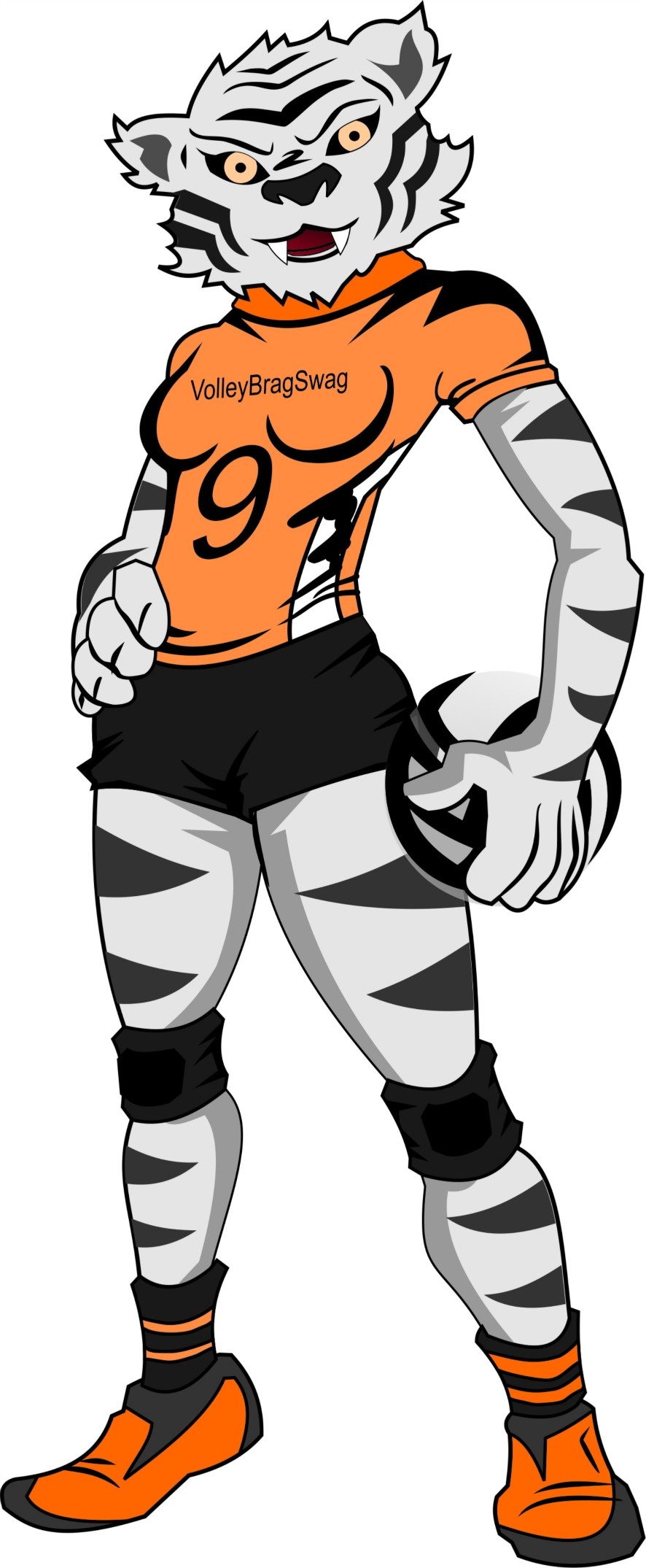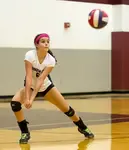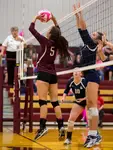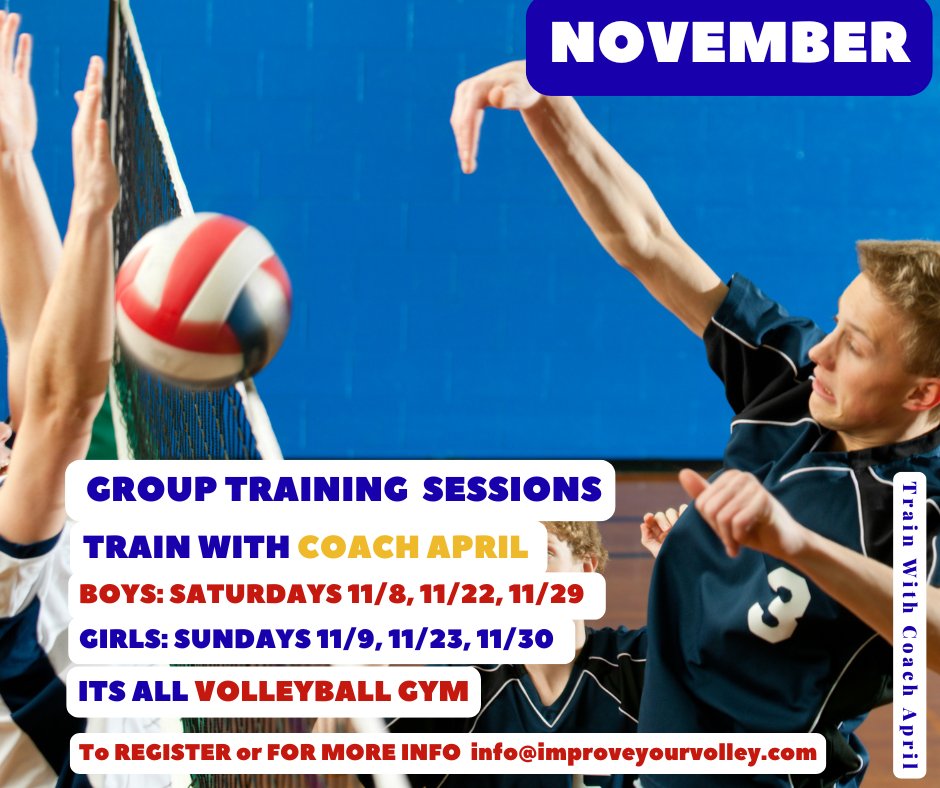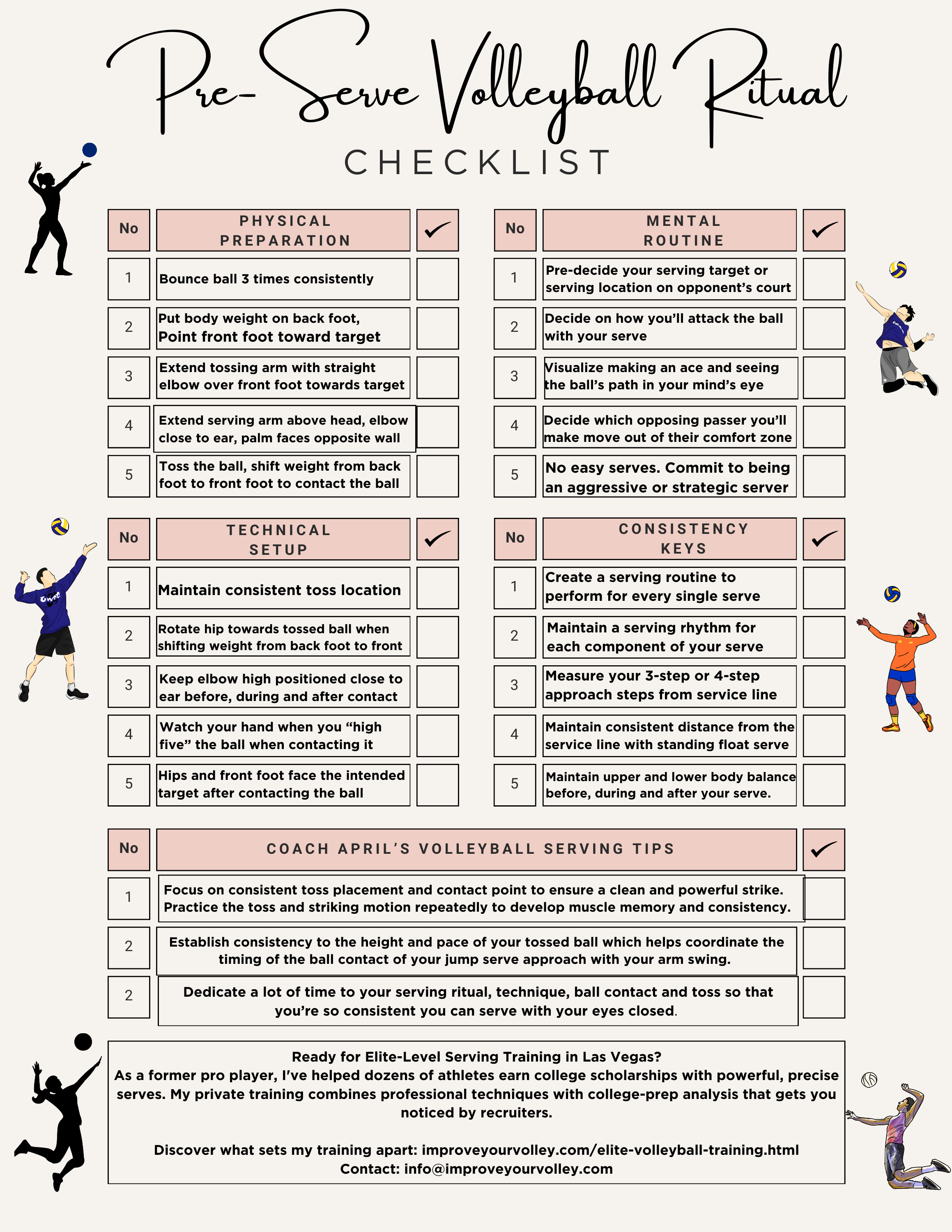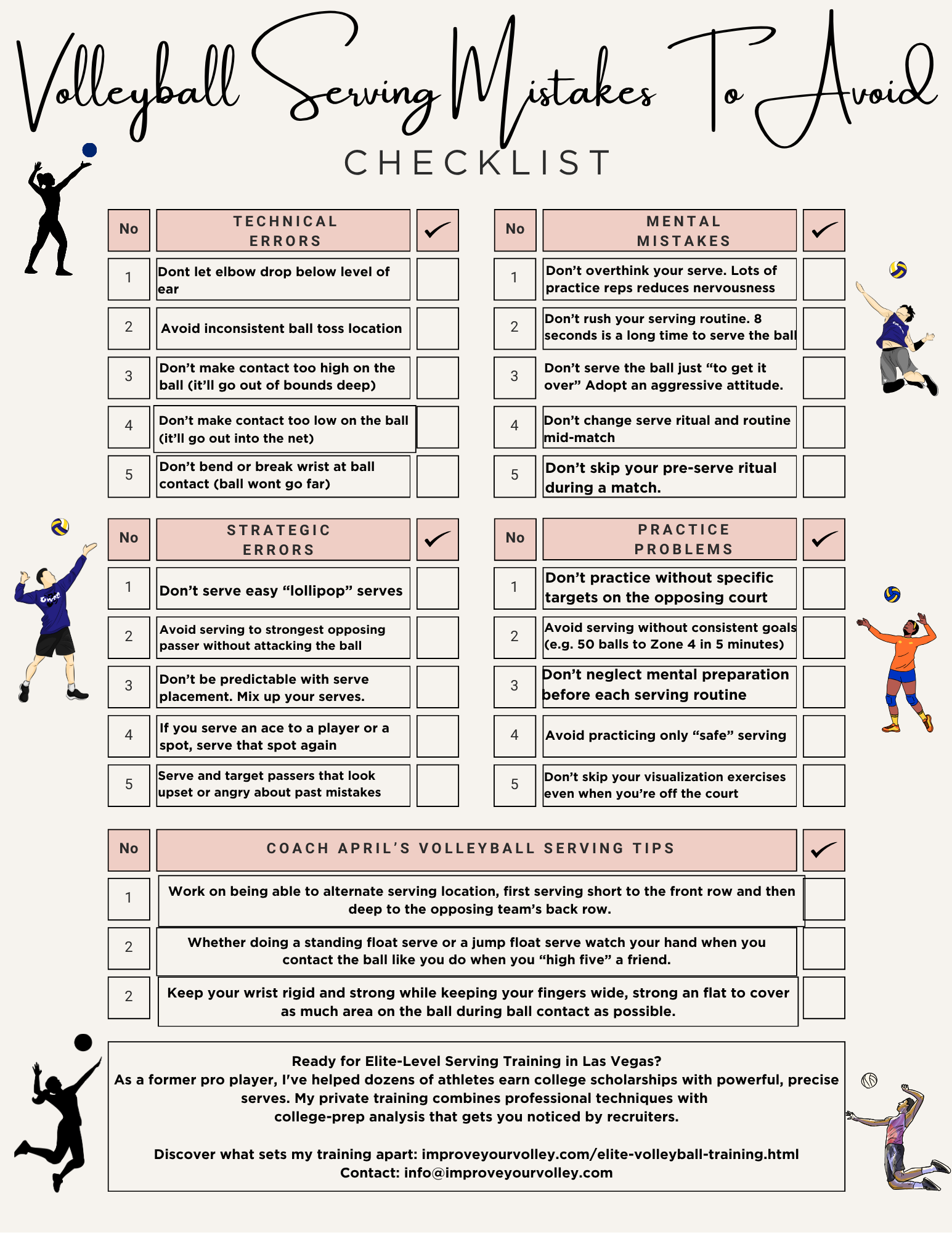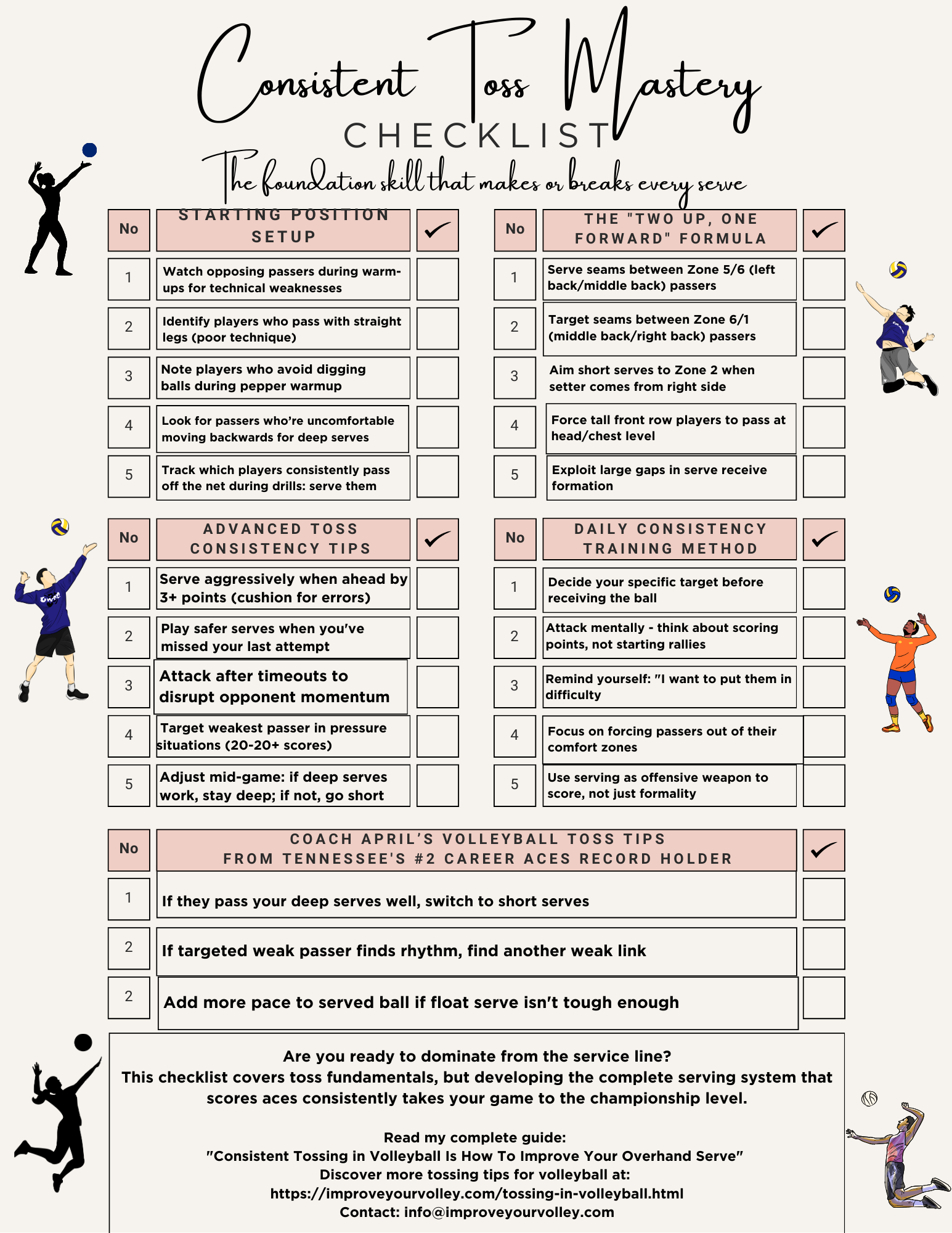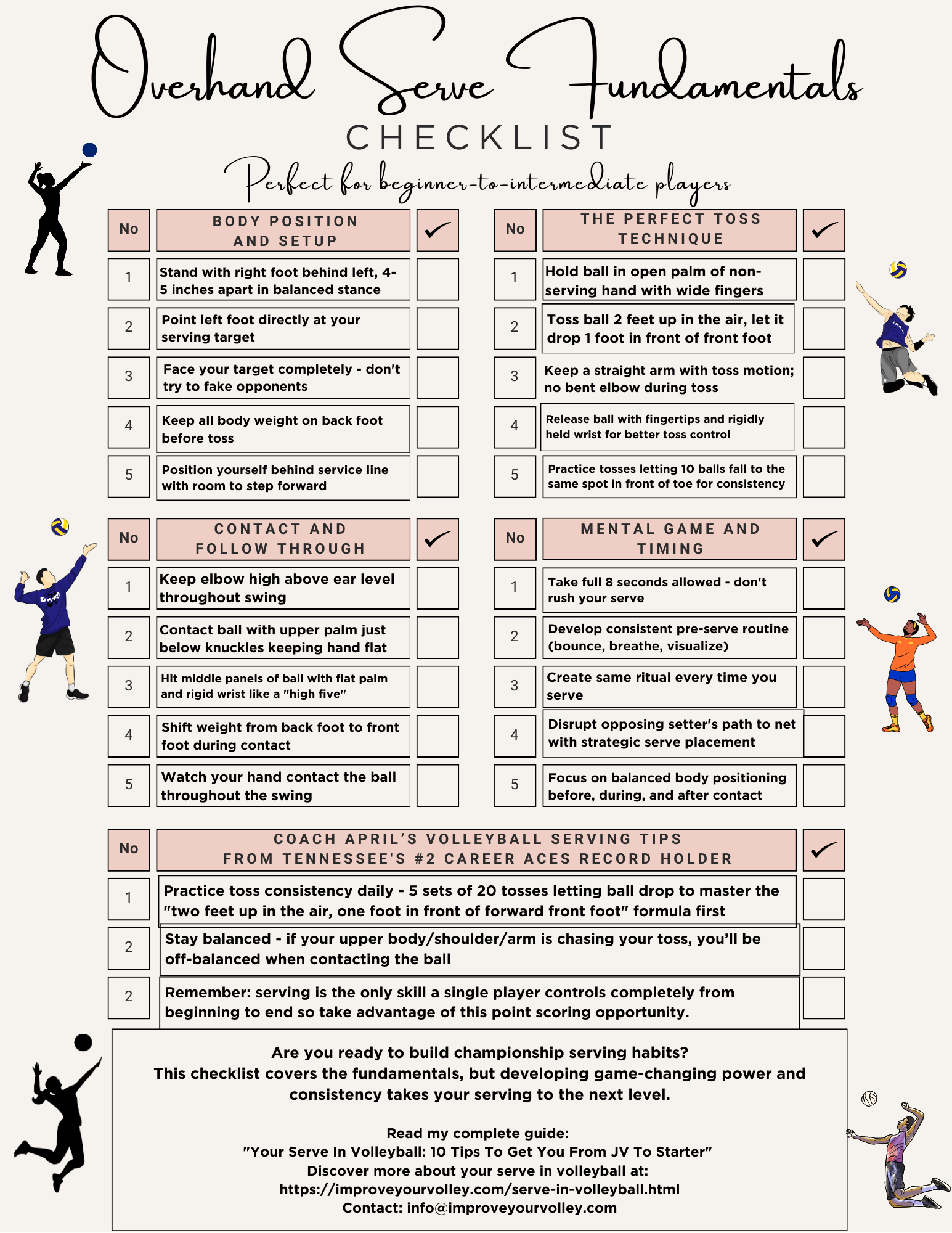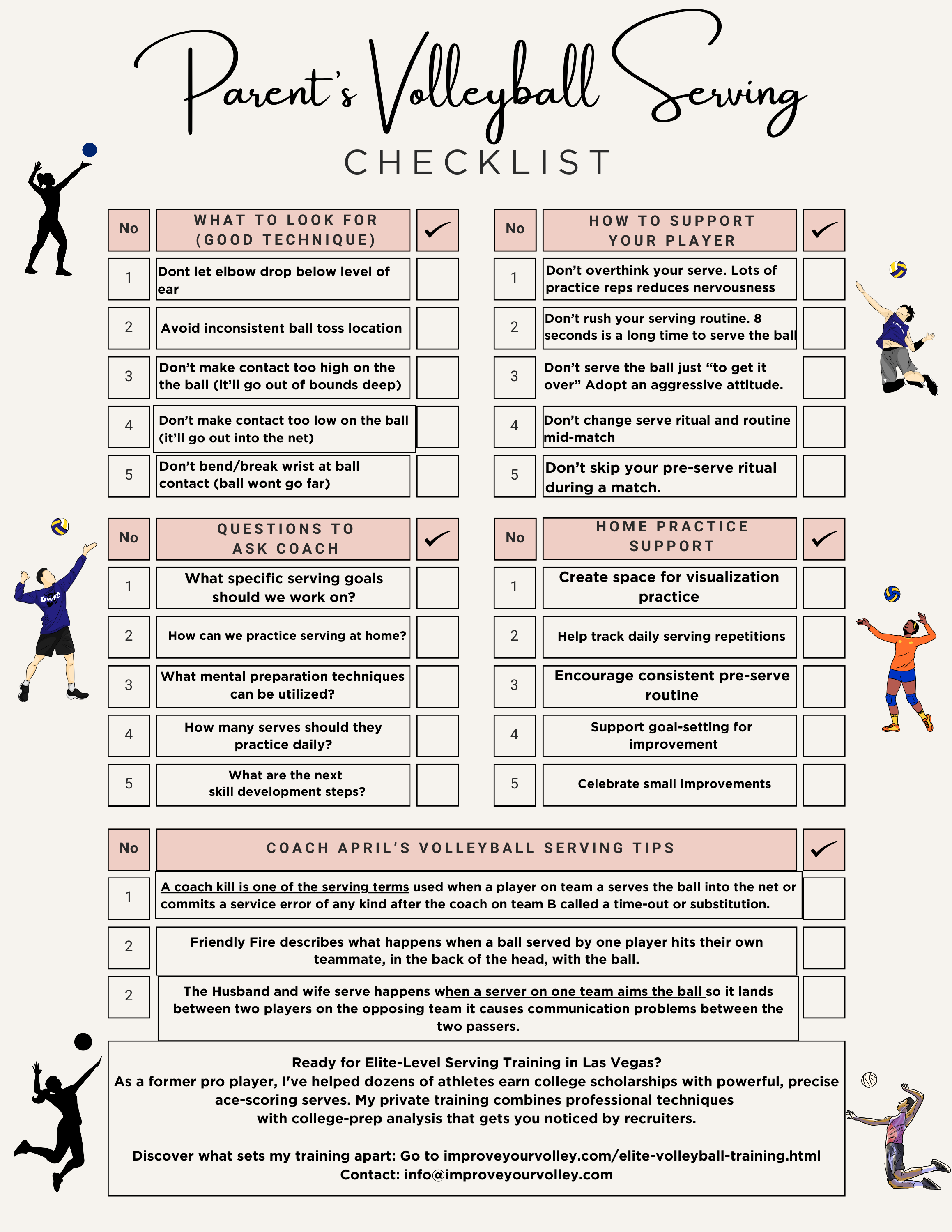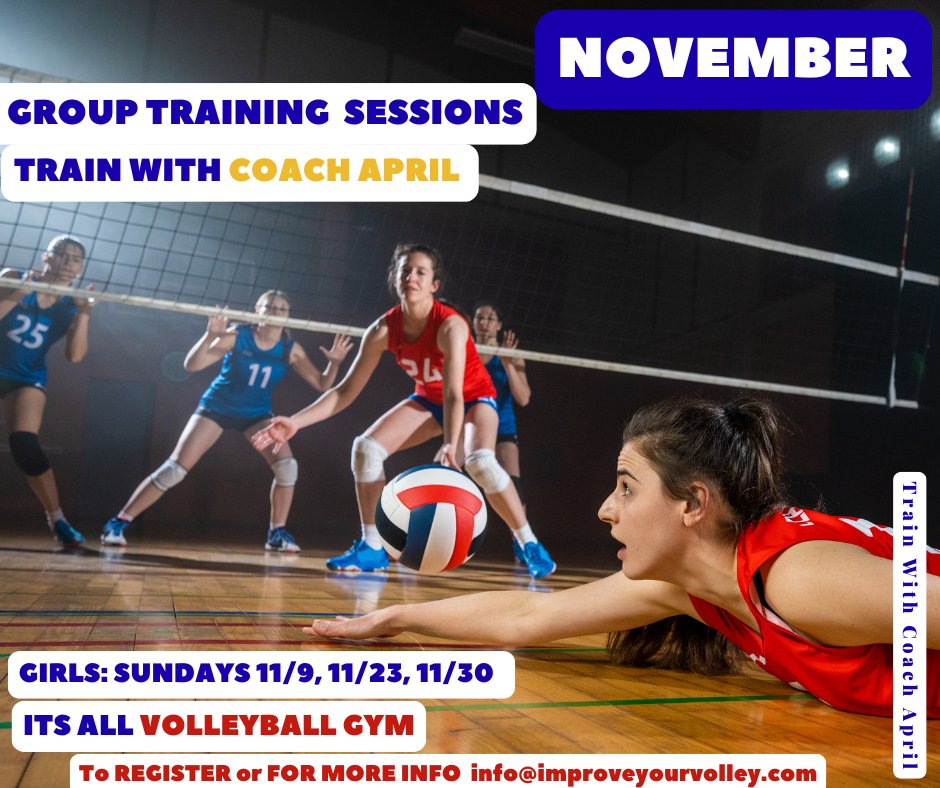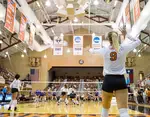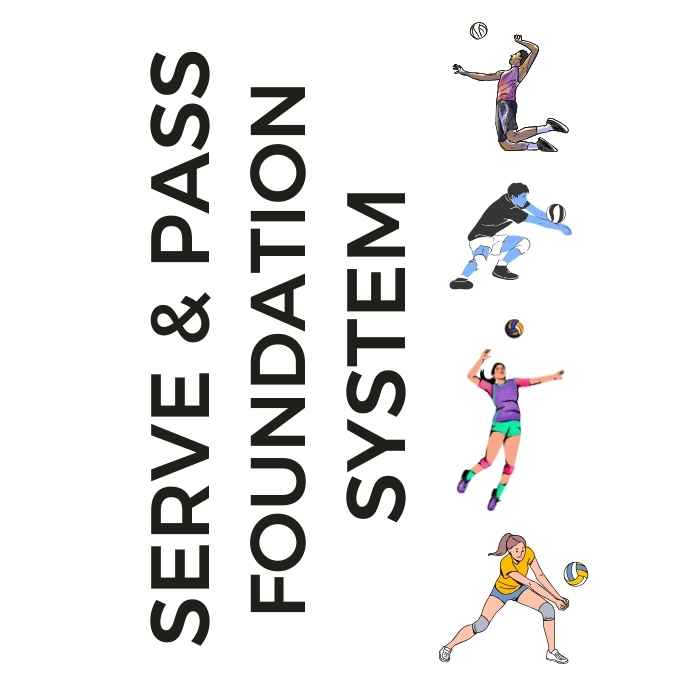
Serve + Pass Foundation System: The Complete Skills Arsenal The two-skill mastery system that transforms inconsistent players into the athletes coaches build their lineups around. Stop Struggling With The Two Most Important Skills In Volleyball!
- Improve Your Volleyball with Coach April
- Volleyball Plays
- Overhand Float Serve Volleyball
Overhand Float Serve Volleyball Tips Score More Aces In Volleyball
With these overhand float serve volleyball tips discover two specific court zones you can serve to in order to increase the chances of scoring more aces.
An overhand float serve in volleyball is a serving technique where the player contacts the ball with an open hand using a flat palm and firmly held non bending wrist.
The lack of spin on the ball results in it "floating" or moving erratically, making it challenging for the receiving team to anticipate and accurately pass.
By imptoving this technique, players can effectively disrupt the opposing team's reception and gain an advantage in the game.
Ready to take your serving to the next level?
I help future college-bound athletes who want to perfect their overhand serve... to elevate beyond basic technique without trial-and-error but through advanced methods that make your serves consistently challenging to receive.
My private training sessions are specifically designed for college-bound athletes who refuse to settle for "good enough" serving.
Limited spots available for serious players only.
How To Do The Overhand Float Serve Effectively
Addi working on her standing floater in volleyball serve down the line.
Focusing on starting with hips open to the wall to her right, a consistent toss and a smooth arm swing when contacting the ball with the middle of her hand to the middle of the ball.
1. Ball Holding Hand Position:
Keep your fingers spread naturally to cover the most ball space and for better control.
Non ball holding dominant serving arm should extend above your head with palm facing outward.
I tell my clients that both arms are held so they look like they're forming the shape of the letter "L".
Check out how Addi does it in the video below.
Focusing on starting with hips open to the wall to her right, a consistent toss and a smooth arm swing when contacting the ball with the middle of her hand to the middle of the ball.
Feet and Footwork For Serve Approach:
Feet are also in the shape of the letter L with your body weight on your right foot and left foot pointed towards where you want the ball to go across the net.
You would follow this rhythm of footwork combined with your ball toss as you approach the service line
Three step serve approach for right hander:
1. Step on left foot
2. Toss the ball 2-3 feet in the air in the path in front of your serving arm
3. Step close ...so step with your right foot and then your left foot ...then launch yourself in the air while staying behind the service line
Four step serve approach for right handed server:
1. Step on right foot, then left foot
2. Toss the ball 2-3 feet in the air in the path in front of your serving arm
Listen to what I tell Addi about being aggressive with her armswing.
Working on her floater in volleyball serve today we did 100 reps of the same serve to the same spot so we could problem solve and work on every body part movement...where things go so when its time to do everything faster...we have smoothed out and understood all the possible wrinkles.
2. Contact Point:
As you initiate the serve, bring your dominant hand forward and swing it towards the ball aiming to make contact with the middle panels of the ball using the top meaty part of your palm to create a firm and flat hand surface.
3. Wrist Position:
Maintain a firm wrist throughout the arm swing serve motion. Avoid excessive wrist snap or spin to achieve the desired lack of rotation on the ball.
4. Ball Toss:
Hold the ball in your non-dominant hand at waist level. Execute a controlled upward toss with a consistent trajectory, pace and height when it leaves your hand.
Aim for a toss that allows you to contact the ball at the highest point of your jump.
5. Weight Transfer and Body Rotation:
As you initiate the serve, transfer your weight from back foot to your front foot by stepping forward with your leading foot.
After you finish your last two steps that launch you in the air, rotate your hips and shoulders at the height of your jump while you're swinging your arm towards the ball, to generate power for your serve.
6. Follow-through:
After contacting the ball, extend your arm fully freezing your shoulder in the air for a millisecond to allow for a complete follow-through.
Keep your hand and hips pointing towards the target to insure better accuracy on getting the ball to the intended target.
Consistency and Repetition:
Practice regularly to develop a consistent and accurate overhand float serve. Focus on repetition to refine your technique, timing, and ball control.
Volleyball Serving Drills: Addi, Piper and Hadley Working on their Jump Float Serve To Chairs for Accuracy and Points during semiprivate training with me.
Visualization and Mental Preparation:
Mental preparation is vital for a successful serve.
Remember, mastering the overhand float serve requires patience, practice, and attention to detail.
By focusing on hand position, contact point, body rotation, and developing a reliable toss, you can achieve greater control and effectiveness in executing the overhand float serve.
Ready to take your serving to the next level?
I help dedicated players who've mastered basic overhand serving elevate to next-level float serve precision without losing power using refined techniques that make your serves consistently difficult to handle.
My private training sessions are specifically designed for college-bound athletes who refuse to settle for "good enough" serving.
Limited spots available for serious players only.
Do You Follow Me on Pinterest?
Follow me on Pinterest Volleybragswag to improve your game even faster!
I share alot of individual, partner and easy-to-do volleyball serving drills we do in class with my followers.
Many of these volleyball practice drills you can do at home by yourself or try at your next practice with your teammates.
If you're a B team or JV player trying to make varsity next year...your goal should be to complete 1000 reps a day of at least three of the basic skills on your own...volleyball passing, serving and setting should be at the top of the list.
Overhand Float Serve Volleyball
Where Do You Go From Here?
Your options are:
- You can learn more about Strategy by visiting the related links below.
- Follow the suggested reading on our Sitemap page Learning How To Play (Sitemap)
- Or visit the pages in the How to Play Volleyball section in the drop down menu at the top of the page to get started.
- Before leaving this page Say "Hi" to Miss Tattoo the Tiger wearing the #9 jersey below. Miss Tattoo is the starting defensive and serving specialist for the All Beast VolleyBragSwag All Star team.
If your athlete struggles with consistent serve receive, gets subbed out, or is overlooked for playing time—this is the fix you’ve been looking for.

Struggling with passing consistency?
I help talented passers tired of getting pulled from games because of inconsistent serve receive skills BUILD passing confidence without expensive private lessons using the same 3-step system that's helped dozens of my athletes get recruited.
Download my eBook for $17.99 and start building the passing confidence that keeps you on the court—and gets you seen by college coaches.
From Lady Vol to Legend: Coach April Produces Powerful Passionate Players...is that you?
What Are You Looking For?
Click to Download Your Pre Serving Ritual Mastery Checklist pdf:
🎯Volleyball Pre Serving Ritual Guide -
Players! Learn How To Transform Your Serve from Weak to Weapon
Click to Download Your Parent's Volleyball Serving Checklist pdf
🎯Parent's Volleyball Serving Checklist Guide
Parents! Help Your Player Develop Championship Serves (Even If You've Never Played)

Hi there!
Thanks for stopping by. Hope you learned something today that will help you reach your volleyball goals.
Be sure to subscribe to my email newsletter so you can learn more each week!
Stay strong! Stay motivated!
-Coach April

SUSCRIBE to my email newsletter below!
 Click to learn more about the weekly volleyball classes and clinics or email info@imrpoveyourvolley.com for information
Click to learn more about the weekly volleyball classes and clinics or email info@imrpoveyourvolley.com for informationCongratulations to my seven Boys-18s Vegas Volley club players who played in two state championship finals yesterday, the 3A and 5A State champinship finals at Sunrise Mountain High School.
TOURNAMENT CHAMPIONS!
A-1 Vegas Volley VBC
In It To Win It Tournament
May 2 - 4, 2025 Tournament
Gold Medalists
18s Premier Division
Vegas Volleyball's Unsung Heroes: Celebrating Moms with Peace Love Volleyball Shirts
Ready to energize your volleyball mom journey?
Subscribe to my 'Producing Powerful Passionate Peaceful Players' email list above on ImproveYourVolley.com.
You'll receive energy-boosting tips, exclusive insights from me, Coach April Chapple on maintaining momentum in volleyball.
Let's power up the Vegas volleyball scene together!
Recent Articles
-
3 Beach Volleyball Hand Grips How Do You Hold Your Hands When Passing?
Dec 20, 25 05:32 PM
The purpose of the volleyball hand grip you use to pass a ball is to help keep your elbows straight and to insure you have a very flat and wide a platform. -
5 Essential Serving Tips from Tennessee's #2 Career Aces Record Holder
Dec 09, 25 11:39 PM
I've identified the 5 essential serving tips that separate confident servers from struggling ones and you'll serve with the confidence that creates aces -
The Volleyball Toss How Consistent Is Your Ball Toss Before You Serve?
Dec 07, 25 12:29 AM
The volleyball toss for the overhand serve needs to consistently be two feet up in the air and one foot in front of front foot which puts the ball in front of your serving arm.
Bestselling
Volleyball Nets
on Sale!
